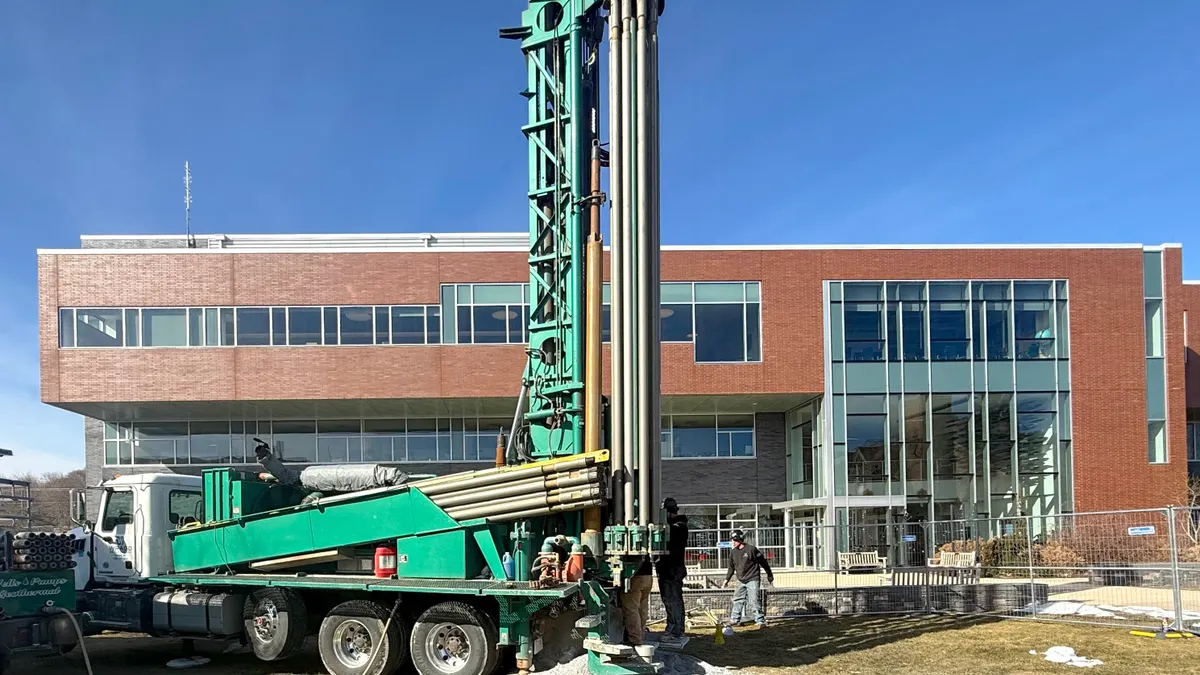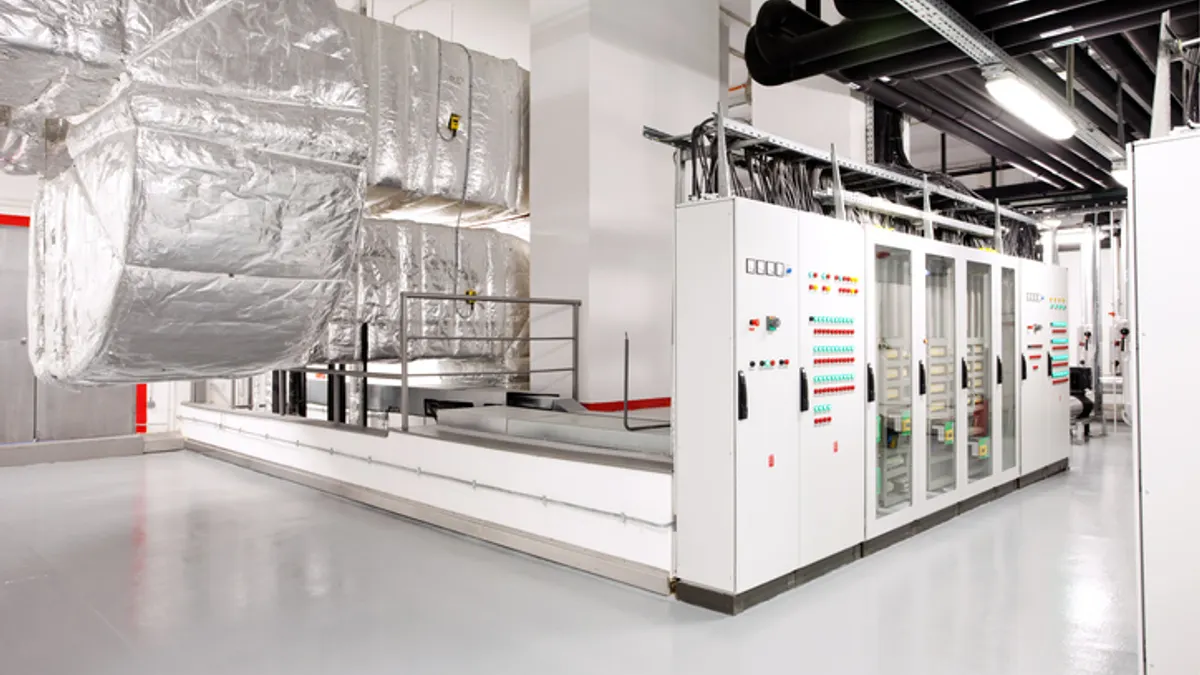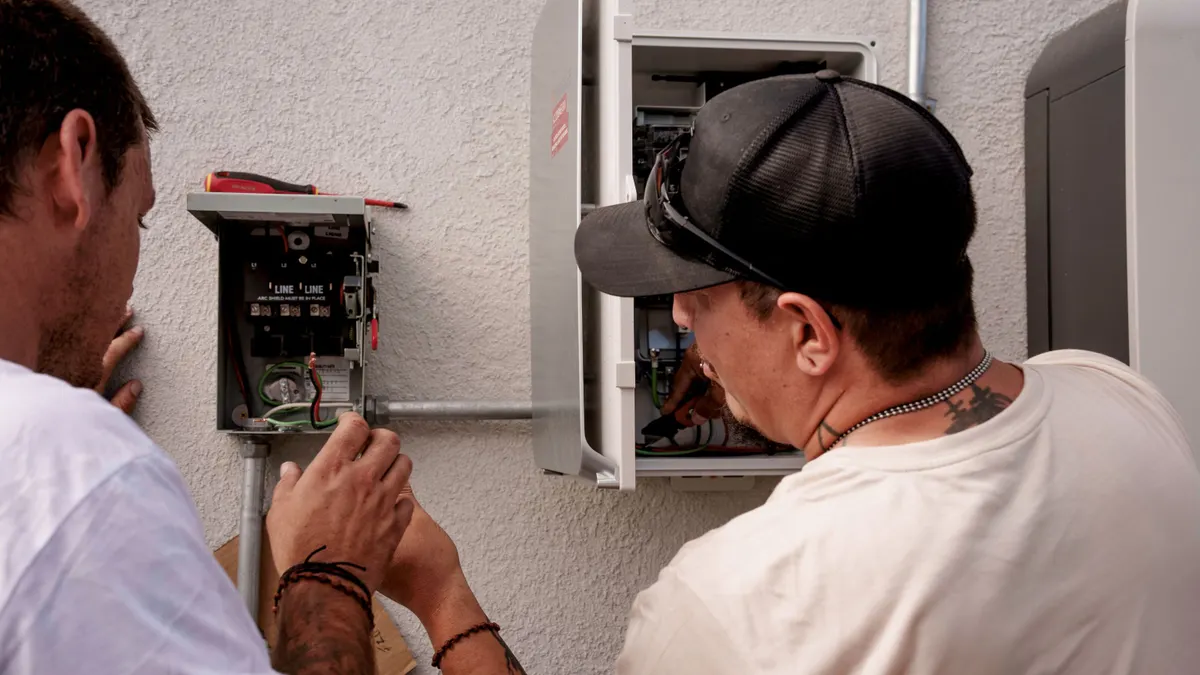The University of Rhode Island will heat and cool a new research building on its Narragansett Bay Campus using a geothermal well after a test showed it could reduce energy use, ease maintenance needs and lower utility bills, the university said Thursday.
“The results of the investigation were that the geology possesses excellent thermal conductivity characteristics and good drilling conditions, yielding a high rate of production, making it feasible to design and implement a geothermal system at this location,” Seth Pilotte, construction projects manager at the Narragansett Bay Campus, said in a statement.
The university is constructing a new building, called the Ocean Frontiers Building, to replace the school’s 55-year old Horn Laboratory. The new building will have environmentally controlled labs to support the school’s work with advanced scientific instruments, the university says. Once in operation, the geothermal system is expected to reduce energy use up to 60% for heating and 50% for cooling, paying for itself in five to 10 years, it says.
Universities across the U.S. are looking underground to geothermal systems, which can improve energy efficiency and reduce carbon emissions from campus heating and cooling. A 2023 analysis by the Oak Ridge National Laboratory and the National Renewable Energy Laboratory found that installing geothermal heat pumps in about 70% of U.S. buildings could reduce electricity demand by 15% annually, eliminate up to 7 billion metric tons of carbon-equivalent emissions through 2050 and potentially avoid the need for 24,500 miles of new electricity transmission.
Test well
The decision to look at the potential for geothermal energy began last year in March. The university’s facilities team, using a $100,000 grant from PPL Corporation, an affiliate of PPL Electric Utilities and other energy organizations, drilled an 850-feet-deep test well.
"Our partnership with PPL enabled us to perform the necessary geothermal research and testing,” David Palazzetti, senior director of URI Facilities Operations, said in a statement. “With support from URI leadership, we are now able to install an HVAC system that will provide an excellent return on investment and savings on operational costs, while also helping the University reduce its environmental impact."
The test faced some difficulties along the way, the school says. Accessing the location for the test wasn’t easy because of steep elevation changes in the area, heavy pedestrian traffic and the small width of roadways. Because of those conditions, the facilities team relied on access through the construction site for the new building, which “required another level of coordination with the contractor and project manager, Pilotte said.
Once in place, a drill rig bore holes through 10 feet of surface clay and about 800 feet of bedrock. Positioning the rig and doing the drilling accounted for most of the testing costs. The balance was for equipment, engineering and ensuring compliance with environmental and safety regulations, the school said.
The Oceans Frontier Building is expected to open in fall of 2028. The design of the geothermal system could also support the Ocean Science and Exploration Center, the Watkins Laboratory and the Ocean Robotics Laboratory in the future, the university said.










